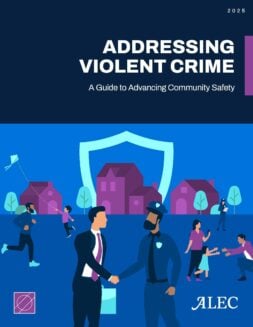Introduction
Violent crime rose sharply across the U.S. during the pandemic, particularly homicides and carjackings, though national trends have begun to ease in recent years. Traditional “tough on crime” policies that rely mainly on longer sentences and broader criminal penalties have shown little deterrent effect and can unintentionally increase long-term crime by driving more people into cycles of conviction and reoffending.
A more effective approach is “Smart on Crime,” which focuses enforcement on violent offenders, while pairing accountability with strategies that reduce repeat offenses. This requires properly resourcing law enforcement so that officers can focus on responding to violent crimes—not mental health crises or non-criminal calls—and ensuring departments are well-funded transparently, rather than through fines and fees.
Proven strategies like hot spot policing and blight reduction have delivered significant drops in shootings in cities like Boston, Cincinnati, and Dallas. On the back end, reforms that prioritize widening the exit from a criminal lifestyle and recovering from it help stabilize individuals and communities.
The central goal is not to be softer or harsher, but more precise—reducing violence by breaking the conditions that allow it to persist, while ensuring justice remains fair and effective.

